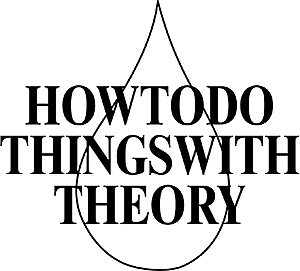Mean Girl Theory ~ Ana Teixeira Pinto's seminar from Confluence to Confluence
April 2024: confluence 4 in Essaouira
In his novel The King of Pirates, Daniel Defoe describes a little-known episode on the life of Captain Henry Avery. The pirate seizes the dowry of a Mughal princess, but his initial euphoria will soon turn into disappointment: the goods he has seized cannot be converted to monetary value in European markets. The pirate’s bounty is, as Siraj Ahmed observes, “caught between the diverse economies of the premodern world.” The impossibility to estimate its value marks the limit of European modernity, by pointing to “other worlds.” Whereas capitalism demands these other worlds be subsumed into the world of international trade monopolies, the conversion of all forms of value into monetary value threatens to break down age-honoured patriarchal values. Hence the paradox at the heart of modernity: asignificant market relations are hard to reconcile with patriarchal hierarchies. To borrow from Sylvia Wynter, a ceremony must be found in order to reconcile former and latter. In this seminar we will look into the fraught relation between capitalism and masculinity.
readings:
Sianne Ngai. “Envy, in Ugly Feelings. Cambridge, MA: Harvard University Press, 2007.
Tiqqun. Preliminary Materials for a Theory of the Young-Girl. Chicago: Semiotexte, 2012.
Saree Makdisi. “Introduction,” in Romantic Imperialism: Universal Empire and the Culture of Modernity. Cambridge: Cambridge University Press, 2009.
Donna V. Jones, “Inheritance and Finitude.” ELH 85, nr. 2, (2018): 289-303.
Barbara Spackman, “Mafarka and Son: Marinetti’s Homophobic Economics.” Modernism/Modernity 1, nr. 3 (1994) 89-107.
Victor Román Mendoza “Introduction." In Metroimperial Intimacies: Fantasy, Racial-Sexual Governance, and the Philippines in U.S. Imperialism, 1899-1913. Durham: Duke University Press, 2015.
March 2024: confluence 3 at PAF
The epistemological antinomy between matter and spirit is an age honoured one, but, as Jean-Joseph Goux argues, this antinomy does not just index the battle between materialism and idealism: “there are sexual, or at least sexed, stakes operating throughout the history of this conflict.” The connotation of matter with corruption, contingency and death is tied to a conceptualization of conception in which only in the “male’s semen does the principle of the soul, that is life, reside;” on the side of the female “there is no order, no principle of internal organization, no generative power.” This division between the active and the passive roles in procreation, Goux sustains, is symbolic of the symbolic: The trajectory of western metaphysics is regulated by substitutions derived from the same structuring metaphor, in which mind, masculinity and value converge. Shaped by gender but not limited to it, the neat opposition this epistemological regime institutes, expanded during the epoch of Western imperial conquest, to encompass racial and colonial registers, whose legacy continues to haunt contemporary societies and their public spheres to the present day.
In our next seminar we will look into the role of gendered metaphors in Western Epistemology and their intimate relation to sexuality and Otherness.
readings:
Jean-Joseph Goux. Symbolic Economies, After Marx and Freud. New York: Cornell University Press, 1990.
Marie-Hélène Huet. Monstrous Imagination. Cambridge, MA: Harvard University Press, 1993.
Durba Mitra. Indian Sex Life: Sexuality and the Colonial Origins of Modern Social Thought. Princeton: Princeton University Press, 2020.
L. Stephanie Cobb, Dying to Be Men: Gender and Language in Early Christian Martyr Texts. Columbia University Press, 2008
Todd Sheppard, Sex, France, and Arab Men, 1962–1979, University of Chicago Press, 2017
Pete Newbon, The Boy-Man, Masculinity and Immaturity in the Long Nineteenth Century, Palgrave, 2019
January 2024: confluence 2 at NAC, Nida
The first installation of the seminar is led by Sladja Blazan.
“Vanishing and Appearing”
In 1900, a department store in Chicago made all the news not with their sales but with their windows. Shocked by the eerily disembodied head of a beautiful young woman, the crowds gathering in front of the store made it necessary to install an iron bar to keep the glass from cracking. The woman, who a minute before was visible in the window, vanished! Where did she go? And how?
Before giving the world the wizard who knew that performance is everything and sending Dorothy through a whirlwind into the kingdom of Oz, L. Frank Baum worked as a pioneer shopping window dresser. The author of The Wizard of Oz had already made another woman disappear before Dorothy–-the notorious “Vanishing Lady.”
In this first installation of the “Mean Girl Theory” seminar with the title “Vanishing and Appearing,” we will discuss the fascination with the disappearance of women’s bodies. After collecting historical examples of strategies of erasure, we will look into strategies of re-inscription. The name of the live model on a motorized stand is unknown to us today. She is recorded in history as “the vanishing lady” only. How can we actively re-inscribe into the archives that which has always already been vanishing?
Readings:
Karen Beckman. Vanishing Women: Magic, Film, and Feminism. Durham: Duke UP, 2003.
Saidiya Hartman. Wayward Lives, Beautiful Experiments: Intimate Histories of Social Upheaval. New York and London: Norton, 2019.
Baron von Schrenck-Notzing. Phenomena of Materialisation [Materialisations-Phänomene 1914] London: Paul, Trench and Trubner and Co., 1923.
November 2023: introduction days at PAF, St. Erme:
DAI-BULLETIN 2023—2024 nr. 1 November 2023

